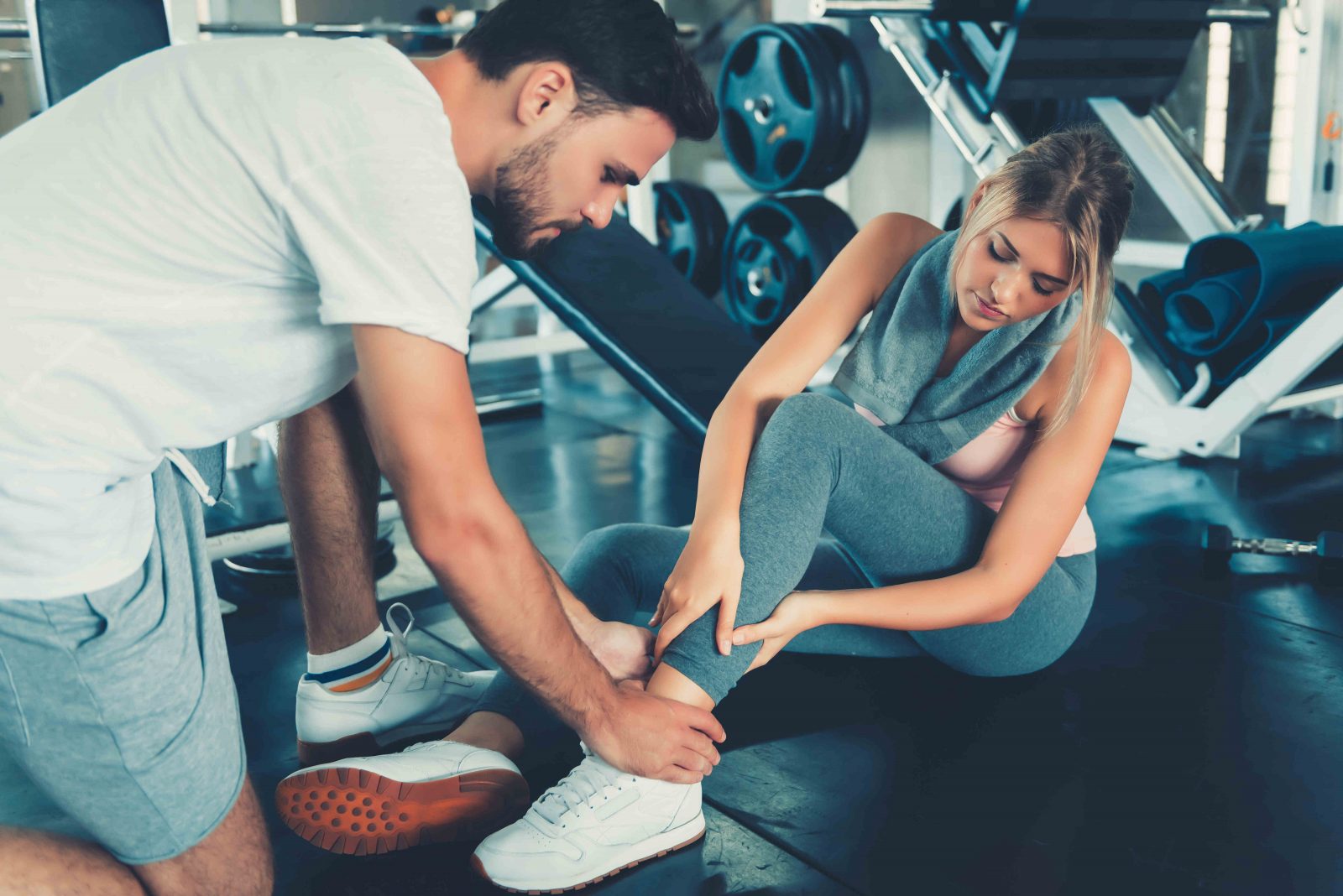Dr. Akash Mehta is an Emergency Medicine board-certified specialist, health and fitness consultant, and Concierge Medicine physician based out of Los Angeles. After finishing medical school at the Touro College of Medicine in Manhattan, Dr. Mehta completed his Emergency Medicine residency at Mount Sinai Medical Center in Miami Beach. Then Dr. Mehta joined Kaiser Permanente as an Emergency Medicine attending physician in West Los Angeles. After years of obtaining intricate knowledge of the healthcare system, he decided to branch on his own and create Nyla Health. He continues to work with various Emergency Medicine groups in and around Los Angeles, and most notably had extensive experience in the frontline during the COVID-19 pandemic.

It’s the new year. The COVID-19 pandemic restrictions are loosened in your city, and your gym sent you an email a few months ago saying that they had restarted your membership. You avoided going these last few months because well…you were doing just fine with a minimal home workout routine. Consistency, however, has been an issue. I mean, how are you supposed to find the motivation to workout in the same room you watch Netflix?
Alas, it’s the new year, and new you. You sign up for your old Bootcamp class at your gym, and you’re there bright and early at 7 am. By 7:20 am, you’re dripping in sweat, and you’re feeling more confident in your stamina. The instructor takes the class outside for sprints. You line up with the others. You bend your knees and back into position. As soon as you take off, however, you feel a sudden sharp pain ripping through the back of your right thigh!
You have just suffered what is likely the most common exercise injury—a strain. Amongst a strain, you can also experience a sprain. Here Haute MD expert Dr. Akash Mehta reviews the two most common exercise injuries to date: strains and sprains.
What is a strain?
A strain refers to an injury (pulling of the fibers) of a muscle or tendon, and in this particular case, you likely suffered a strain of your hamstring muscle or the attached tendon. However, nearly any skeletal muscle/tendon can be strained, including those in your arms, calves, neck, back, chest and even abdominal wall! Most of these are mild to moderate. However, severe strains are essentially muscle or tendon tears, which can require surgery! Muscle/tendon tears you may have heard of with famous athletes are Achilles tendon tears, rotator cuff tears, bicep tears, and many others.
Mild to moderate strains are usually accompanied by some pain, swelling, cramping, and bruising. It can take 3-6 weeks to heal. However, the more severe the pain and the longer the duration of the pain and swelling, the higher the chance that you have a severe strain/tear that may require surgery. Severe strains/tears have extraordinary pain and swelling; the affected person may even hear a “pop” when it occurs. The area that is affected such as your upper arm or thigh can seem misshapen due to a large amount of blood pooling in the area (called a hematoma) and the torn tendon/muscle which is “rolled up” because it is no longer connected to a bone. You will have weakness of the affected area and possibly even no strength (such as the inability to lift yourself onto your toes with an Achilles tear). It will be difficult to know whether you need surgery upon your own assessment; often even a medical professional will have to obtain further imaging such as an MRI to better clarify the level of injury. Thus, I recommend going to your primary care doctor if you are having severe pain and swelling with your injury.
What is a sprain?
The next most common exercise-related injury is likely the sprain. A sprain refers to the “pulling” or tearing of ligaments, which are tissues that connect bone to bone. Similar to strains, severe sprains and complete tears of ligaments often require surgery. By definition, these occur at joints. Knee and ankle sprains (such as ACL and MCL injuries) are unfortunately common in exercise and sports that include sudden start-and-stop running motions, such as basketball and football. Rotator cuff and elbow sprains/tears can occur with a sudden increase in shoulder/elbow weight training, such as with heavy dumbbell military presses or an excessive number of sets of cable tricep pull-down.
Similar to strains, sprains/ligament tears which need surgery can be difficult to identify at home. Usually, it is a delayed diagnosis; if you cannot bear weight on your knee or lift your shoulder without agonizing pain in a week after injury, you should see your primary care doctor. An MRI and/or referral to an orthopedic specialist may be needed.

How are strains and sprains treated?
All strains and sprains (even those that may require surgery eventually) are otherwise treated the same. R.I.C.E. (rest, ice, compression, and elevation) is the mainstay of treatment.
Rest your injury for at least a couple of days, but you may need more depending on the severity (do not perform activities that elicit severe pain at any point while you are recovering).
Ice the injury 20 minutes for every hour that you are awake. In 2-3 days, it may be more beneficial to switch to heat.
Compress the affected area if possible to limit/decrease the swelling, such as with an elastic bandage (ACETM Elastic Bandages would be the most common brand name). Compression for sprains also refers to immobilization; such as a sling for a shoulder injury, or a knee/ankle brace if possible (immobilizing the injury limits motion to provide rest).
Elevate the injured area to also decrease swelling. For instance, you can place your feet on an ottoman while in your living room, or on a couple of pillows while sleeping for a leg/foot strain. Besides R.I.C.E., eventually, you may benefit from physical therapy as well, but such a decision is best made with your primary care doctor or specialist.
What are strains and sprains caused by?
They are almost always caused by tight, weak, or imbalanced muscles. To avoid muscle strength imbalances, it is recommended to have a balanced strength training regimen. For instance, the same focus should be placed towards strengthening the back of your upper legs (gluteus/hamstring muscles) as there is towards the front (quadriceps). If you already recovered from a sprain/strain, you may need more focus in that area to prevent re-injury. Stretch and perform warm-up exercises before and after the perilous activity, whether it be a particular sport, running or heavy sets of weight training.
How common are strains and sprains?
All in all, strains and sprains are unfortunately experienced by nearly every mobile individual in their lifetime. Most individuals can remember some sort of “pulling” of a muscle with various activities, or even “pulling their back” with repeated bending of their lower spine. Most strains and sprains are minor to moderate and are easy to treat; they respond well to R.I.C.E., with rest (and having patience for it) being the most important element. Severe strains and sprains can require surgery; the most common telltale signs of these are severe pain and swelling, and the inability to significantly improve symptoms in a week. If concerned, an evaluation with your primary care doctor is recommended. Last but not least, prevention is key; please incorporate ample stretching and warm-up exercises before any physically arduous activities.
Winter is coming to an end, so to my readers, be smart and be ahead of the pack. If you haven’t already, slowly start your fitness regimen now before rushing for that summer body to best avoid injury!
























